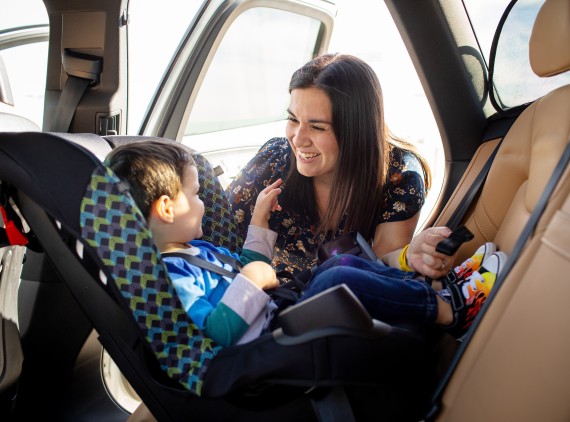Staying informed on child passenger safety is crucial to keep your child safe in the car. Deciding which type of car seat to purchase can be an overwhelming process that involves many factors. Many families also believe that buying a car seat is a one-time purchase, but that is not always the case. Here are 3 different scenarios that signify it might be time to buy a new car seat.
1. When your child has outgrown it
Every car seat has its own height and weight limits intended to keep your child safe. These limits depend on the type of car seat, including its specific model and manufacturer.
Aside from weight and height limits, there are other factors to consider when deciding whether your child has outgrown their car seat: the harness height (i.e., how the harness lays on your child's shoulder) and the head position (i.e., how far the child's head is from the border of the car seat).
Always read your car seat’s manual and labels so you can determine when it's time to change your child's car seat to align with the next stage of their development.
2. When the car seat has reached its expiration date
Car seats expire, but not like milk or eggs do. Although car seats are made of very strong and resistant plastic, they can still degrade over time and lose their original safety properties, especially when exposed to high temperatures and sunlight.
The life span of a car seat is typically between 5 to 10 years, depending on the model and manufacturer. The expiration date can typically be found stamped on the outside of the car seat, on its label, in the owner’s manual or on the manufacturer’s website.
3. When the car seat has been involved in a car crash
The National Highway Traffic Safety Administration (NHTSA) recommends replacing your child’s car seat after being involved in a moderate to severe car crash, even if your child was not in it. The force of a car crash can be strong enough to damage the car seat and affect its safety performance.
Every car seat manufacturer will have its own recommendations on whether to replace it or not, although many follow NHTSA’s recommendations. Always read the owner’s manual and contact the manufacturer to learn more about the replacement guidelines specific to your child’s car seat.

